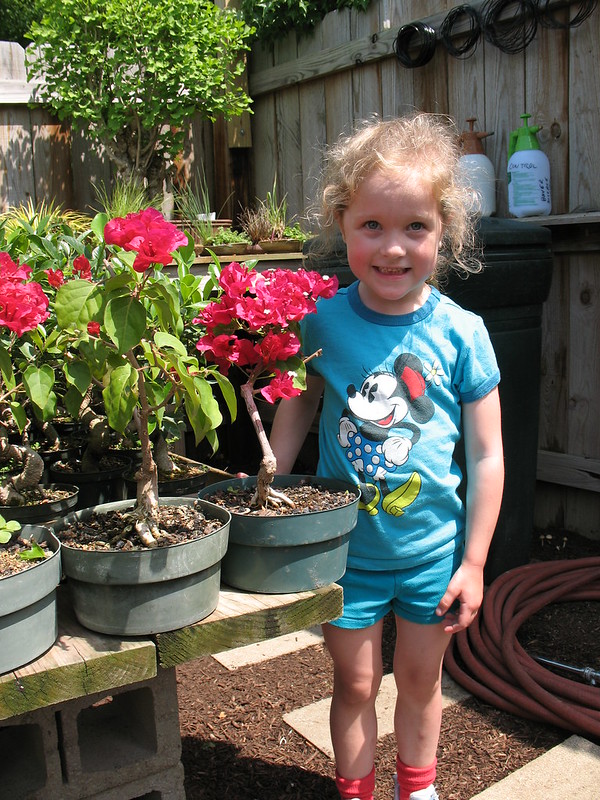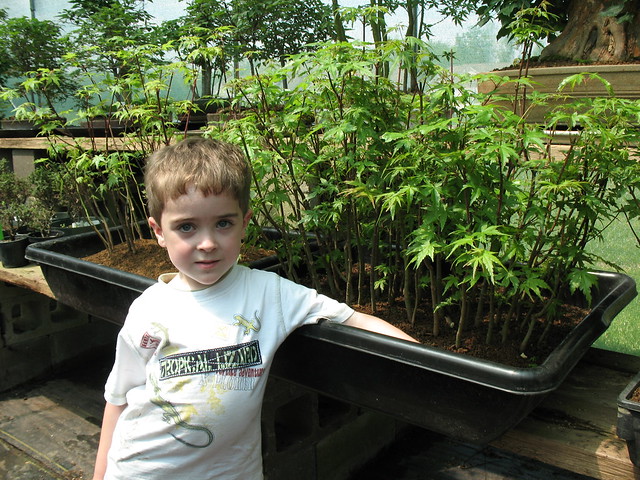 In a Center Grove backyard, the world-class bonsai master, Mark Fields, has his bonsai collection, nursery, and school called Bonsai by Fields, LLC. A well-known bonsai master, Craig Coussins of the UK says this about Mark: “His beautiful nursery contains many fine specimens and a great deal of excellent material to create and develop your own bonsai under Mark’s expert tutelage.”
In a Center Grove backyard, the world-class bonsai master, Mark Fields, has his bonsai collection, nursery, and school called Bonsai by Fields, LLC. A well-known bonsai master, Craig Coussins of the UK says this about Mark: “His beautiful nursery contains many fine specimens and a great deal of excellent material to create and develop your own bonsai under Mark’s expert tutelage.”
Mark’s interest in bonsai started when he was 8 years old and grew as he trained in Europe and studied and showed across the USA from New York to Oregon. Bonsai (pronounced bōn-ˈsī) is an art that started in China and Japan and became popular in the USA with the movie, Karate Kid. Bonsai means a tree on a tray and is the art of growing miniature trees.
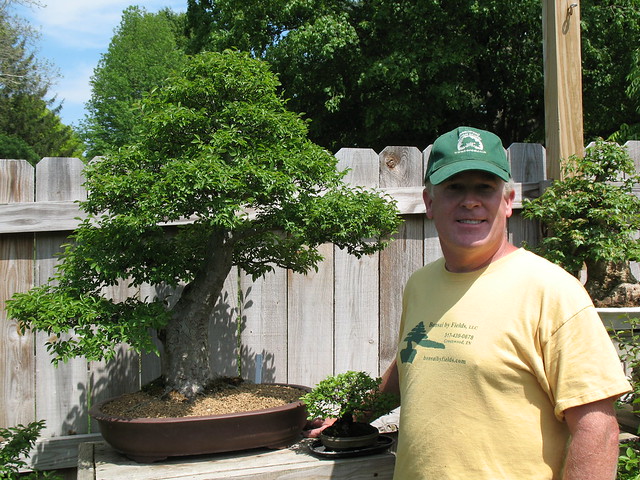
We’ve selected a few photos that will give a glimpse of Mark’s bonsai knowledge and show some of his collection. Just like Mark, his 5-year-old twins, Lincoln and Addison, have started young in their love of bonsai, and we’ll use their favorites to tell about bonsai. Lincoln’s favorite is a Trident Maple “forest,” Addison’s favorite is a Bougainvillea with pink flowers, and Mark’s favorite is a Chinese Elm.
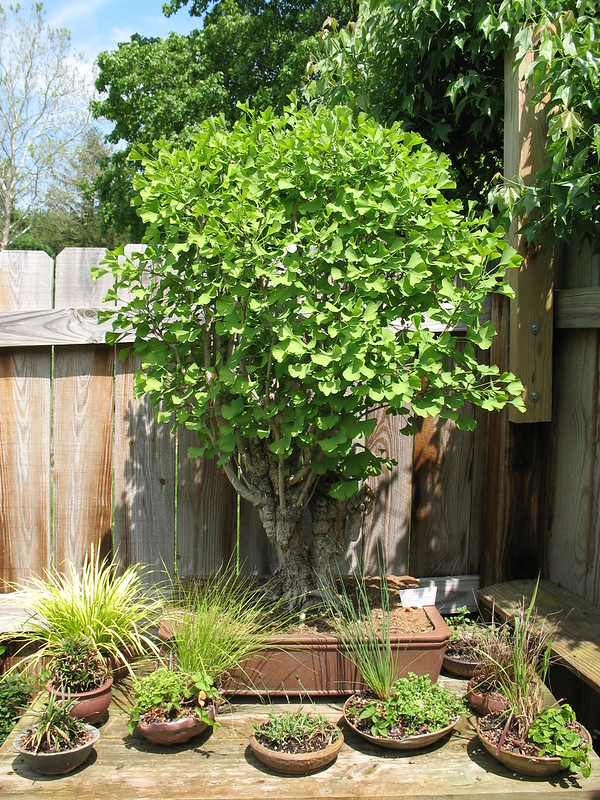
Lincoln’s maples give us one example of a bonsai process where trees are started from cuttings, allowed to grow outside, then brought into the tray where shaping steps begin. The process continues until you have the bonsai in a display tray like the picture of Trident Maples that Mark started in 1995.

These are living trees so maples will drop their leaves, or like Addison’s Bougainvillea, they will bloom with flowers and some will have fruit. The trees are kept miniature by controlling their growth with pruning, but the fruit will be regular size; so an apple bonsai tree can only have a few fruits allowed to stay on the tree.
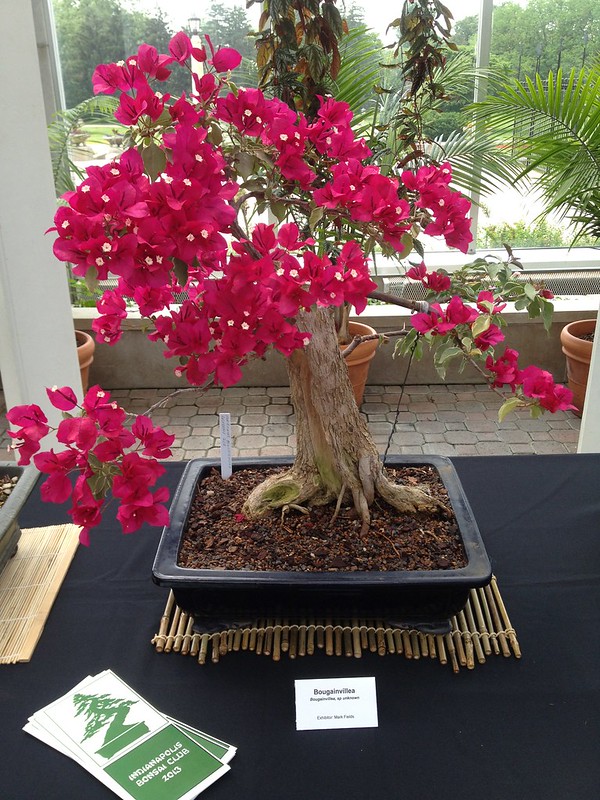
The technique of wiring is done in Mark’s favorite, the Chinese Elm, but you’d have to look close to see the wires. Working with live trees is an artistic process that never ends, and you can see that in Mark’s beautiful Gingko, imported from Japan, that is over a hundred years old.

See the trees as living art, and you can imagine the cascading Ponderosa Pine growing on a windswept Colorado mountain; feel serene wandering in a maple forest among the fall colors, and then appreciate the heritage in the 100-year-old Gingko.
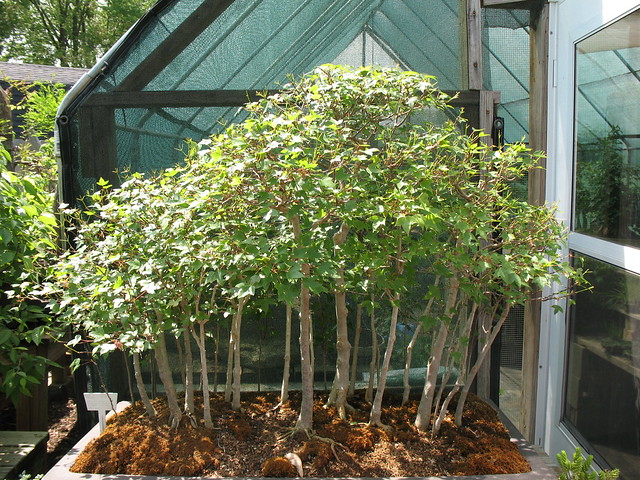
Mark recommends a book by Craig Coussins, Bonsai for Beginners, and for children, the Bonsai for Kids by Frank Milhalic. According to Mark, the best way to get started with bonsai is a “hands on” approach with workshops or classes or joining a club like the Indianapolis Bonsai Club. Mark’s web site bonsaibyfields.com has information and links on all these topics. From his web site, you can also arrange a visit to see his collection or call Mark at 317-439-0678. You’ll be hooked on bonsai!
